 Image search results - "yasu" Image search results - "yasu" |

Yasukuni Shrine is Japan's most prominent shrine for the war dead. Near Kudanshita Station on the Tozai Subway Line. This is the first giant torii
|
|

Yasukuni Shrine during the Mitama Matsuri before dark.
|
|

Path to shrine
|
|
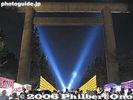
Yasukuni Shrine's main torii during Mitama Matsuri
|
|
|
|

Promenade to the shrine
|
|

Statue of Omura Masujiro (1824-1869) 大村益次郎, founder of Japan's modern army. Also pushed for the establishment of Yasukuni Shrine.
|
|

Spotlights create a silhouette of the statue of Omura Masujiro (1824-1869) 大村益次郎, founder of Japan's modern army.
|
|

Sekigahara saw one of Japan's most pivotal battles on Oct. 21, 1600 (Sept. 15 of Keicho 5) between Tokugawa Ieyasu's Eastern Forces and Toyotomi Hideyoshi loyalist Ishida Mitsunari's Western Forces. Ieyasu's victory in the Battle of Sekigahara sealed Japan's historical fate for the next 250 years. The former battlefield is dotted with monuments indicating the positions of various warlords during the battle.
This photo shows Mt. Momokubari where Tokugawa Ieyasu first set up his base camp for the Battle of Sekigahara. It is next to busy Route 21. A short distance east of Sekigahara Station. The former Sekigahara battlefield has numerous monuments.
|
|

Banners and a monument mark the spot on Mt. Momokubari where Tokugawa Ieyasu's first base camp was established during the Battle of Sekigahara on Sept. 15, 1600.
|
|

Ieyasu and his troops were here from about 6 am to 10 am on the day of the Sekigahara battle. He later moved closer to the front line as the battle was going his way. This is a National Historic Place. 桃配山 徳川家康最初陣跡
|
|

Steps going up to Tokugawa Ieyasu's first base camp at Momokubari during the Battle of Sekigahara on Oct. 21, 1600 (Sept. 15 of Keicho 5). Today it's just a small hill. The highway seemed to have cut through most of it.
|
|

Steps going up to Tokugawa Ieyasu's first base camp during the Battle of Sekigahara.
|
|

At the top, see the two large rocks which served as a table and bench for Ieyasu. 家康の腰掛岩と机石
|
|

Monuments marking Tokugawa Ieyasu's first base camp during the Battle of Sekigahara. The banners have the Tokugawa family crest.
|
|

View of the Sekigahara battlefield from Tokugawa Ieyasu's first base camp at Momokubari.
|
|

Monument marking Tokugawa Ieyasu's first base camp during the Battle of Sekigahara.
|
|

Another smaller monument marking Tokugawa Ieyasu's first base camp during the Battle of Sekigahara.
|
|

Sign explaining that the two rocks below were said to be used as a bench and table for Ieyasu.
|
|

Behind the monuments is a trail probably used by Ieyasu's troops on Mt. Momokubari-yama.
|
|
|
|

A bon dance around the base of the statue.
|
|

Second torii
|
|
|

You wash your mouth hands here. Built in 1940 by Japanese living in the US. 大手水舎
|
|
|

Gate built in 1934. 神門
|
|

Spotlights hit the torii.
|
|

Back view of second torii
|
|
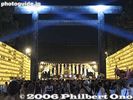
At night, 30,000 lanterns light up. A real summer spectacle.
|
|

Imperial crest on gate door
|
|
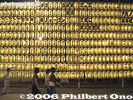
The lanterns are lit by lightbulbs, not candles.
|
|
|
|
|

Cherry blossom path to shrine
|
|

Tanabata streamers festoon the gate.
|
|
|
|
|

Noh stage and the cherry tree used as the barometer for Tokyo's cherry blossom blooming condition.
|
|

At 6:30 pm, a mikoshi portable shrine was paraded along the promenade.
|
|

Yasukuni Shrine, Torii and Haiden hall
|
|
|

Yasukuni Shrine, Haiden hall. After the Class-A war criminals (such as Hideki Tojo) were enshrined here, the late Emperor Hirohito (Showa) never worshipped here again. 拝殿
|
|
|

On Aug. 15, the anniversary of Japan's surrender and the end of World War II, Yasukuni Shrine is a busy with worshippers and police. These are police buses.
|
|

Police bus.
|
|

From Kudanshita Station to the first torii, the path is jammed with political activists not even related to the war or shrine.
|
|

Rising Sun flag
|
|

On Aug. 15 at Yasukuni Shrine, you can see former soldiers and nationalists dressed in military uniform marching in the shrine.
|
|
|
|
|

On Aug. 15 at Yasukuni Shrine, you can see former soldiers and nationalists dressed in military uniform marching in the shrine.
|
|
|

On Aug. 15 at Yasukuni Shrine, you can see former soldiers and nationalists dressed in military uniform marching in the shrine.
|
|
|
|
|
|

They march up to the end of the line of worshippers lined up to pray at the shrine. Then they turn around and head back.
|
|
|

Worshippers at Yasukuni Shrine on Aug. 15.
|
|

Worshippers at Yasukuni Shrine on Aug. 15.
|
|
|

Worshippers at Yasukuni Shrine on Aug. 15.
|
|

Praying at Yasukuni Shrine on Aug. 15.
|
|
|

Heavyweight judo Olympic gold medalist Satoshi Ishii (石井 慧) was also at Yasukuni Shrine on Aug. 15, 2009. He was very kind and signed autographs, shook hands, and took photos with a lot of people.
|
|
|
|
|
|
|
|
|
|

One of the giant spotlights used to accent the mikoshi, torii, and night sky.
|
|

Noh stage
|
|
|
|
|
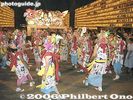
After the mikoshi, the Nebuta float and haneto dancers make an appearance.
|
|

Yushukan war museum 遊就館
|
|
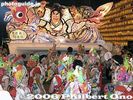
Rassera-rassera!
|
|

Entrance to Yushukan war museum 遊就館
|
|

Yushukan war museum 遊就館
|
|

Nebuta float and haneto dancers. Also see the video at YouTube.Mitama Mtasuri at Yasukuni Shrine.
|
|

Inside Yushukan war museum. Impressive, but its version of Japanese war history is skewed. No exhibit on the Pearl Harbor attack either. 遊就館
|
|

Awa Odori dancers also performed.
|
|

Inside Yushukan war museum: Photos of the war deceased. Look carefully and you may find photos of Hideki Tojo and co.
|
|
|

Yushukan war museum 遊就館
|
|
|
|
|

Nebuta close-up
|
|

Memorial for military dogs which died.
|
|

Nice to see a bit of Aomori in Tokyo.
|
|
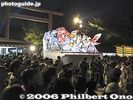
After the Nebuta made its way in front of the shrine, a short prayer was held.
|
|

Memorial for military horses which died.
|
|
|

Yushukan war museum 遊就館
|
|

Mother Statue 母の像
|
|
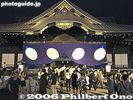
The shrine
|
|

Memorial for sunken naval warships
|
|

The Nebuta then went back to the promenade.
|
|

Memorial for Justice Radhabinod Pal, an Indian judge during the war crimes tribunal. He was a judge who voted for the innocence of Japan's war criminals.
|
|
|
|
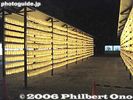
Lanterns
|
|

Monument for kamikaze pilots who died.
|
|
|

Memorial for military horses and dogs which died.
|
|

The lanterns are written with the names of the donors.
|
|
|
|

参集殿
|
|

Stage entertainment is also provided during the festival.
|
|

Rest house
|
|
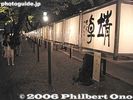
The bigger lanterns have artwork. Some of them were done by celebrities.
|
|

Garden 神池庭園
|
|
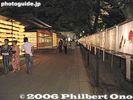
Path to the Yushukan war museum.
|
|

Garden 神池庭園
|
|
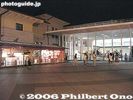
Yushukan war museum
|
|

Entrance to sumo arena.
|
|

Next to the museum was a display of different lanterns, including a Neputa (left) and Nebuta (right).
|
|

Entrance to sumo arena
|
|
|

Sumo arena. An exhibition sumo tournament is held every April.
|
|

Tokugawa Ieyasu's Final Base Camp at Jinbano 陣場野 徳川家康最後陣跡
|
|
|

Tokugawa Ieyasu's Final Base Camp at Jinbano. At 10 am, he moved here from Mt. Momokubari to be closer to the front line. 陣場野 徳川家康最後陣跡
|
|

慰霊の泉
|
|

Neputa is from Hirosaki, Aomori Pref.
|
|

Tokugawa Ieyasu's Final Base Camp at Jinbano 陣場野 徳川家康最後陣跡
|
|

Food stands
|
|

Neputa closeup
|
|

Illustration of Tokugawa Ieyasu's Final Base Camp where he inspected the heads of his defeated enemies.
|
|

Adding to the dignity of the shrine is a monkey show.
|
|
|

Inside Tokugawa Ieyasu's Final Base Camp
|
|
|
|

Marker for Tokugawa Ieyasu's Final Base Camp
|
|
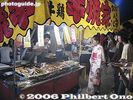
Food stall
|
|

Marker for Tokugawa Ieyasu's Final Base Camp
|
|
|
|

Marker for Tokugawa Ieyasu's Final Base Camp
|
|

View of Mt. Mikami from Omi-Fuji Karyoku Koen Park in spring.
|
|

View of Mt. Mikami-yama amid rice paddies in Yasu. Elevation 432 meters.
|
|
|
|

View of Mt. Mikami from Karasaki, across Lake Biwa.
|
|

Adachi Museum of Art provides a free shuttle bus ride from JR Yasugi Station. The bus schedule is here, but this is not the bus. Also online: https://www.adachi-museum.or.jp/en/shuttle_bus.
|
|

This is the shuttle bus to Adachi Museum of Art. It is slightly behind the bus schedule sign.
|
|

Adachi Museum of Art is celebrated for its beautiful Japanese garden and superb artworks especially by Yokoyama Taikan. And in such a rural place. Amazing.
|
|

The museum was founded in 1970 by Adachi Zenko (1899–1990), a native of Yasugi. He was a successful local merchant as a textile wholesaler and real estate business.He collected Yokoyama Taikan paintings and he thought they went well with the museum's beautiful landscape garden. Free shuttle bus ride from JR Yasugi Station.
|
|

Since it was New Year's 2018, kadomatsu at the museum entrance.
|
|

Mr. Adachi pointing the way to the garden.
|
|
|
|

The museum has super clean picture windows for viewing the gardens.
|
|

Adachi Museum of Art garden, Shimane Prefecture.
|
|

Adachi Museum of Art garden.
|
|

Adachi Museum of Art garden, Shimane Prefecture.
|
|

Adachi Museum of Art garden, Shimane Prefecture.
|
|

Adachi Museum of Art garden, Shimane Prefecture.
|
|

Adachi Museum of Art garden waterfall, Shimane Prefecture.
|
|
|
|

Koi pond
|
|

Picture window with no glass.
|
|

Natural scroll next to a Buddhist altar.
|
|

Adachi Museum of Art garden, Shimane Prefecture.
|
|

Adachi Museum of Art garden, Shimane Prefecture.
|
|

Adachi Museum of Art garden, Shimane Prefecture.
|
|

Sculpture at Adachi Museum of Art garden, Shimane Prefecture.
|
|

Mt. Mikami as seen from JR Yasu Station train platform. The south exit of Yasu Station has a tourist info office where you can get maps and directions to the bus stop.
|
|

West gate (Nishi Gate) to Kibogaoka Culture Park, a large prefectural park featuring a large grassy lawn, sports facilities, camping facilities, and seminar facilities. MAP
|
|

From Yasu Station, it's a short bus ride to the foot of Mt. Mikami (get off at Yamade-mae 山出前). Then backtrack along the road to see two hiking paths. There are two trails, the Front (Omote, seen on the left)) and Back (Ura, seen on the right).
|
|

Large grassy lawn.
|
|

Sign shows the way to the "Front Mountain Path" (Omote Tozando). I recommend taking a bottle or two of drinks. There's a vending machine near the bus stop. If you miss the bus from Yasu Station, it's a 40 min. walk. Taxis available. 表�
|
|

Mt. Mikami in the distance.
|
|

Way to the "Front Mountain Path" (Omote Tozando). Be aware that this is the steep trail, going almost straight up the mountain. You will be going on all fours much of the way. Gloves recommended. 表登山道
|
|
|

The "Front Mountain Path" has a gate to prevent monkeys from escaping to the residential area. Be sure to close the gate after entering.
|
|

Grass slide
|
|

Sign shows the way to the "Back Mountain Path" (Ura Tozando). This is the less steep trail to the summit. Notice the peak on the left. I went on this trail. 裏登山道 MAP
|
|
|

After passing through a bamboo grove, there is a clearing with the Tempo Gimin Monument.
|
|

Shallow stream
|
|

At the foot of Mt. Mikami is Tempo Gimin Monument dedicated to the farmers who were tortured to death after the 1842 Tempo Ikki (天保一揆) uprising against the government's unfair land taxation surveys..
|
|

Mushrooms
|
|

Time capsule to be opened in 2042.
|
|
|

Map of Mt. Mikami. It says the trail is 1.3 km long, taking 40 min. For normal people, allow 80 min. to reach the peak. I took about 90 min. to reach the top, while taking time to take pictures.
|
|

Softball field
|
|

Hiking Rules: No smoking. Do not make fire. Don't break tree branches or damage any trees. Don't take home any rocks, wood, etc. Take home your own trash.
|
|

Cherry blossoms and softball field
|
|

Gate to the Back Mountain Path. Be sure to close the gate after entering. I don't know how it would prevent monkeys from climbing over the low gate. Between Sept. 23 and Nov. 3 during mushroom season, 500 yen admission is charged for the Front/Back pa
|
|

West Gate for car parking. Bus stop on right.
|
|

Hiking up the Back Mountain Path. The trail actually goes mainly toward the side of the mountain rather than the back. The back of the mountain has a trail going down toward Kibogaoka Bunka Koen Park.
|
|

Two wooden signs pointed in opposite directions both say "To Mt. Mikami summit." Go right to continue on the easier Back Mountain Path. Or go left to get on the steeper Front Mountain Path. The large white sign says "Take home your trash.&q
|
|

Sacred tree. The bark from this tree is used for the roofing of the shrine. Do not scratch or damage it.
|
|

Steps
|
|

The trail is rocky and rooty, with lots of tree roots.
|
|

Sometimes log steps are provided.
|
|

Halfway point called Uchikoshi 打越. It's a small clearing and crossroads for multiple trails. Also a good place to harvest matsutake mushrooms during the fall (Sept. 23-Nov. 3).
|
|

Sign
|
|

This trail goes around the side of the mountain. Not recommended.
|
|

Trail to summit.
|
|

500 meters until the peak.
|
|

Roots
|
|

Chain railing is helpful.
|
|

Roots
|
|

Steel railing to grab.
|
|

Small torii and shrine.
|
|

No sign for this little shrine.
|
|

Kokegatani Valley. There's a small dip in the trail, going down and up again. This is a small valley near the peak. Visible as a small notch next to the peak. 苔が谷
|
|

Kokegatani
|
|

View from the dip. There should be a better view on the other side too, but too many trees block the view.
|
|

Yuba-no-Futokoro
|
|

The sign is almost totally unreadable.
|
|

Summit in sight.
|
|

Shrine and torii at the summit.
|
|

Shrine and torii at the summit.
|
|

A shrine with a view.
|
|

Gods here must be happy to see such grand views.
|
|

This is almost near the mountain's peak.
|
|

Sacred rock where the god lives.
|
|

Great view, but hazy when I was there. Ishibe is toward the left, and the shinkansen tracks toward the right.
|
|

Sign pointing to a lookout point, slightly below the shrine.
|
|

Going down to the lookout point.
|
|

Lookout point on Mt. Mikami in Yasu.
|
|

View from Mt. Mikami, Yasu. Ishibe is toward the left.
|
|
|

Looking toward Ritto
|
|

View from Mt. Mikami, Yasu.
|
|

On the right, Route 8 can be seen crossing Yasu River.
|
|

Route 8 crossing Yasu River
|
|

The path on the left leads to the mountain's peak.
|
|
|
|

To the peak.
|
|

Just beyond the tree is the peak.
|
|

Summit of Mt. Mikami. Only a small clearing with a bench. It was a great day for hiking. It is quite a popular mountain for climbers. Even for families with little kids. Didn't see any monkeys. No bears.
|
|

Sign at the summit.
|
|

"Take home your trash"
|
|

Going down from the summit.
|
|
|
|
|

Log steps
|
|

Large stone walls
|
|

Chain railing
|
|

Chain railing really helps.
|
|

Lots of ferns.
|
|

1.4 km to Karyoku Koen Park
|
|
|

Downward slope and trail. This trail is called the Karyoku Koen-gawa Tozando which starts from the Karyoku Koen flower park. 花緑公園側登山道
|
|

Tree trunk
|
|
|

850 meters to Karyoku Koen flower park.
|
|
| 1052 files on 5 page(s) |
1 |
 |
 |
|